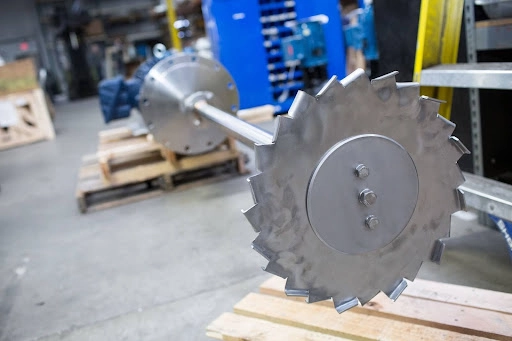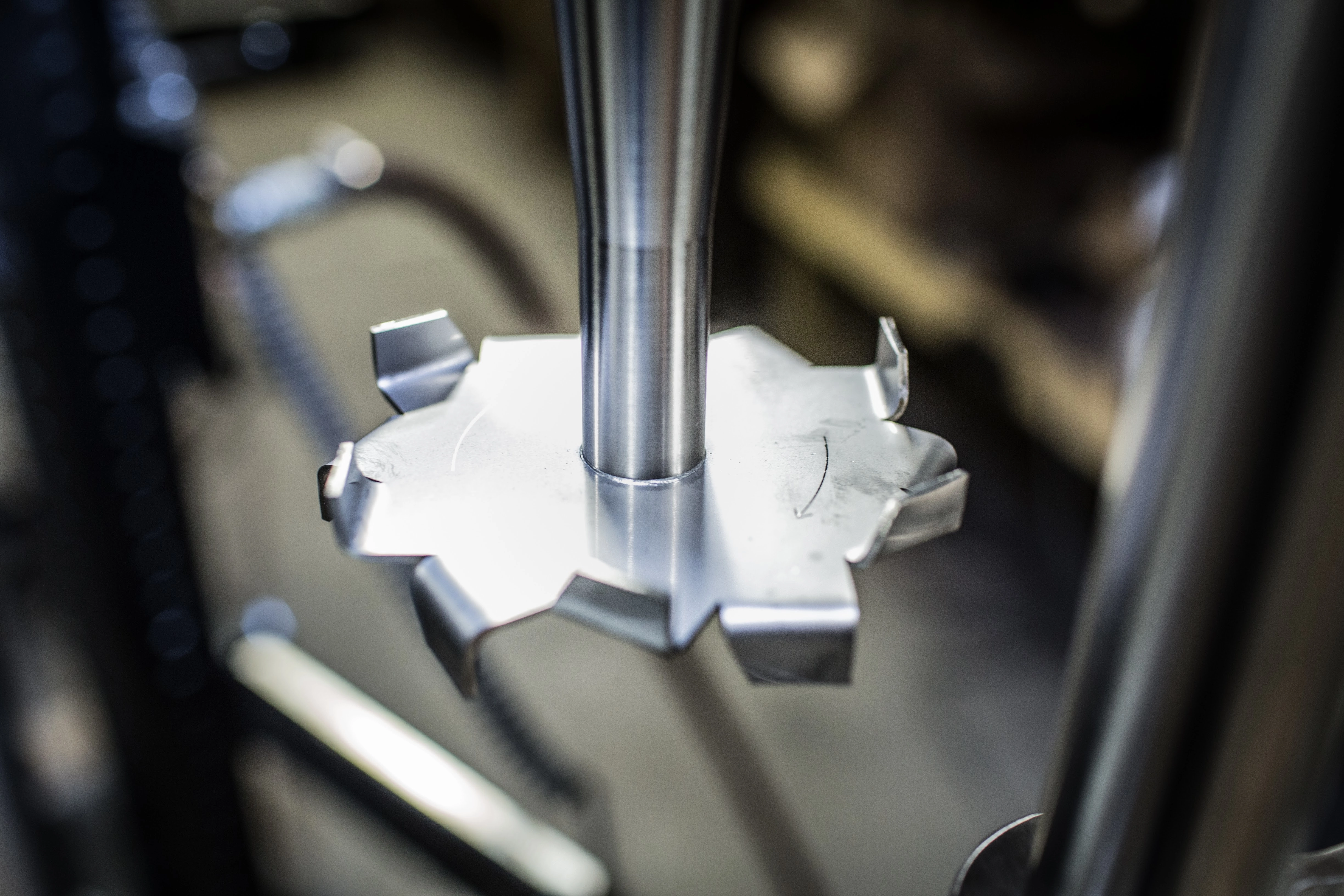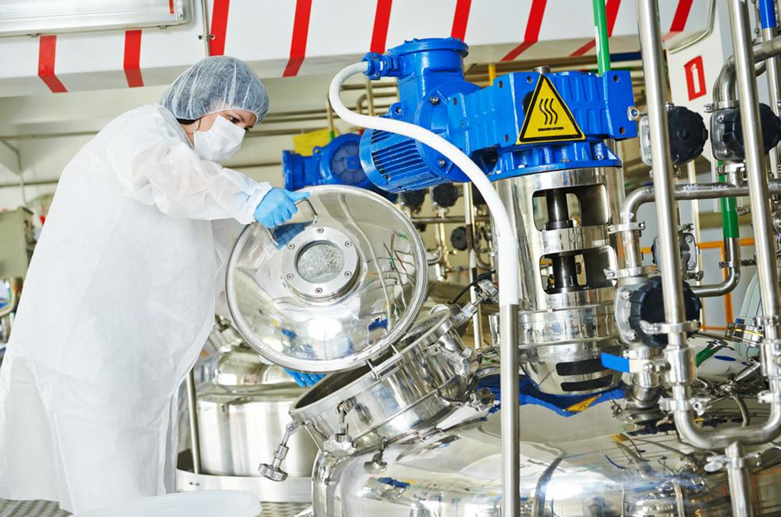Selecting the Right High-Shear Mixer Supplier for Your Needs
Choosing the right high-shear mixer supplier can be the difference between smooth, efficient operation and frequent setbacks due to equipment issues....
While you may be familiar with industrial mixing, high-shear mixing is a specific category in industrial mixing with its own unique functions. High shear mixing is unique as a mixing method in that it can change the chemical composition of ingredients through emulsification, dispersion, and various chemical reactions that take place through the shearing process.
In this comprehensive guide, we’ll go back to the basics of high-shear mixing to understand the process, applications, and pros of cons.
The high-shear mixing process involves using shear to emulsify, homogenize, disperse, or reduce particle size. This shear force occurs when part of the mixture is pushed in one direction, while the other part is pushed in the opposite direction simultaneously. If the shear force is higher, the particles mix more evenly due to the particle size reduction outcomes, which assists in homogenization.
High-shear mixing requires a specialized mixer capable of handling high stress and agitation. Such mixers, known as high-shear mixers, come in various forms (more on this later) and are suitable for a wide range of applications.
High-shear mixing begins with the introduction of materials into a narrow gap situated between two key components; a moving rotor, and a standstill stator. In this gap, a shear force is created and applied to the substances moving through the mixer. This force subjects the materials to intense stress, allowing for a thorough mix.
In addition to rotor stator mixing, high shear blending can also be accomplished with high speed dispersion blades. Dispersion blades utilize one rotary component, the blade, to create shear force across the top and bottom of the blade. Materials are forcefully sent to the outside edges of the blade, where they disperse into smaller particles.
There are two well-known types of high-shear mixers – batch mixers and in-line mixers. Both are high-shear, but they function differently.
Batch mixers blend a set amount of ingredients in a single vessel for a specified amount of time. These are ideal in small-scale operations or when customization is needed between batches.
In-line mixers blend materials in a continuous process as they pass through the mixer and re-circulate into holding tanks or back through the in-line mixer for finer emulsions.. While this ensures consistency, it isn’t the best option to control the ingredients or prevent contamination.
If you’re new to high-shear mixing, finding the right high-shear mixer is only the beginning. Use these tips and tricks for high-shear mixing as a guide through your next project.
Tip #1: Run the mixer at its full RPM for optimal performance.
All mixers have a maximum speed, and assuming the power draw is within the machine’s range, this is where your high-shear mixer will work most efficiently. If you run your mixer too slowly, it will negatively affect the type of product distribution you’re seeking from your high-shear operation.
Keep in mind, if your process requires more shear than what your mixer is able to produce at the maximum RPM, consider changing the stator or jumping to the next horsepower motor.
Tip #2: Keep a variety of rotor stators on hand.
Similar to impellers coming in specific shapes and sizes for their applications, rotors, and stators are configurable for your mixture. By changing the rotor or stator, you can increase tank turnover, shear, and emulsification capabilities.
Tip #3: When scaling your processes, consider different factors.
If you’re scaling up your processes from testing to full-scale production, it’s critical to consider more than just motor power increasing. When scaling up a high shear process, it’s helpful to have a viscometer, rheometer, and droplet size analyzer on hand, and to consider the geometry of the rotor stator along with power draw and shear frequency.
Tip #4: Select liquids with the proper viscosities.
Make sure you’re selecting liquids with a viscosity of less than 5,000 cps to maintain good flow in your vessel. As these viscosities increase, you may need to include ancillary mixing or implement additional pumps to assist in optimizing flow.
Common Applications of High-Shear MixingHigh-shear mixers are frequently used across many industries. However, they’re most prevalent in three industries:
High-shear mixers are suitable for these applications with viscous ingredients. However, if you’re looking for a more gentle mix for delicate ingredients, low-shear mixers are the way to go. Resource: To make an informed decision between high-shear and low-shear mixers, check out our article: High-Shear Mixers vs. Low-Shear Mixers: Which is Best for Your Application? |
Due to their design, high-shear mixers offer several advantages including:
There are two prevalent disadvantages of high-shear mixing – equipment maintenance/longevity and safety/operational considerations.
High-shear mixers operate at very high speeds and generate significant power. This constant rigorous, high-speed operation leads to accelerated wear and tear of the mixer, specifically components such as impellers and seals. As a result, these mixers require more frequent maintenance compared to low-shear mixers. Unfortunately, this can cause high-shear mixers to have a shorter equipment lifespan as well.
Additionally, high-shear mixers have potential safety/operational concerns. These mixers run vigorously and have a potential risk of overheating and loud noise. Overheating can cause mixture issues, degradation of sensitive ingredients, or even safety hazards. On the other hand, the loud noise can require additional measures like soundproofing or protective gear to be in place for operators.
High-shear mixing differs greatly from most industrial or low-shear mixing operations. If you’re just getting started in the world of high-shear, it can be a bit intimidating.
To take a deeper look into the process, check out our article: High-Shear vs. Low-Shear Mixing, or reach out to our team of experts at MXD Process.

Choosing the right high-shear mixer supplier can be the difference between smooth, efficient operation and frequent setbacks due to equipment issues....

Essentially all industrial mixing has one goal -- creating consistent, thoroughly blended products. However, all mixers aren't created equal, so in...

In the precise and regulated world of pharmaceutical manufacturing, the importance of specialized equipment cannot be overstated. Among these, mixers...